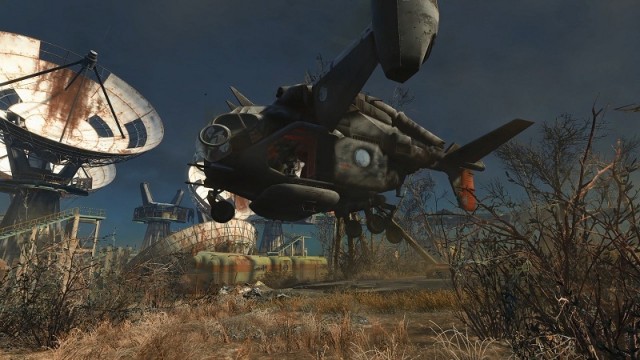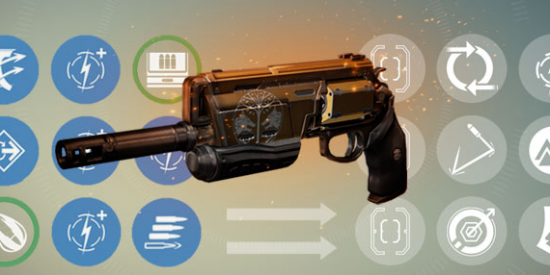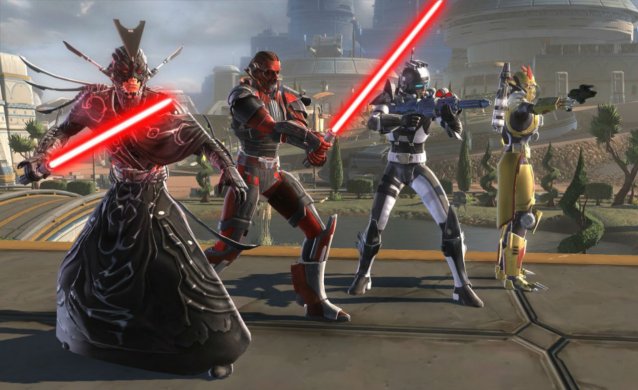

Game Rant’s Jeff Schille reviews Kingdoms of Amalur: Reckoning
Kingdoms of Amalur: Reckoning, the long awaited debut game from Curt Schilling’s 38 Studios, is finally upon us. Featuring the combined talents of Ken Rolston (The Elder Scrolls III: Morrowind, The Elder Scrolls IV: Oblivion), Todd McFarlane (Spawn) and R.A. Salvatore (Forgotten Realms), Reckoning is a sprawling, expansive open world role-playing game that promises hundreds of hours of playtime.
Thanks to the pedigree of those responsible, Kingdoms of Amalur: Reckoning arrives bearing the weight of great expectations. How does it fare? Read on for our full review.
Right or wrong, open world role-playing games have earned a reputation for technical shortcomings. From the opening scenes of Fallout: New Vegas to the many, many absurdities of Skyrim, glitches thrive in the massive, complicated worlds the genre requires. Based solely on its demo (which unlocks items in the full game, and in Mass Effect 3), many players expected Reckoning to suffer the same fate. Thankfully, that is not the case.
Kingdoms of Amalur is technically solid — not once while playing for this review did the game freeze or become in any way unplayable. That achievement alone sets Reckoning apart from much of its competition, though it is not the only area in which the game excels.
From the earliest stages of development, 38 Studios singled out Reckoning’s combat as something special — as indeed it is. Kingdoms of Amalur: Reckoning delivers frenetic, explosive encounters that play out more like an action game than an RPG (check it out in the game’s E3 2011 trailer). The strength of the combat rests equally on the game’s snappy controls and the deep customization options available to players.
While not nearly as complex (or as demanding of precise input) as the combat in, say, God of War 3, Reckoning’s encounters still allow players to unleash all manner of chaos. Careful combinations of close and ranged attacks, of physical and elemental blows, can be either precisely deadly or broadly destructive. Placement on the battlefield is paramount, and being surrounded is always a concern — one most effectively addressed with a Reckoning Mode attack, which renders even large groups and giant enemies nearly helpless, and grants a huge XP bonus if performed correctly.
There is a predictable downside to the game’s combat: there is a lot of it. Particularly in the later stages of the main quest, combat is more or less constant. Since Reckoning is a long game, thumbs will get sore. To be clear, Reckoning’s combat is both fun and rewarding, though repetition eventually saps even the most fearsome Prismere Troll encounter of its power.
Kingdoms of Amalur: Reckoning gives players a huge amount of freedom in how they grow their characters, with skills to master from lock-picking to crafting, and combat abilities to invest in. Those abilities — Sorcery, Might, and Finesse — govern what combat moves characters can learn, and what weapons they will be most proficient with. It’s a markedly flexible system, allowing players to mix and match freely. Characters are further shaped by the choice of race, Patron God, and Destiny Types — all of which confer specific ability bonuses.
Mastering a particular skill can have a dramatic impact on how players interact with the world. The Detect Hidden skill, for instance, initially reveals obscured caches of supplies, but eventually gives players the power to detect invisible doors, and find treasure and Lorestones on the mini map.
Amalur is a vast and colorful land, jam-packed with enemies to fight, goodies to find, and mysteries to uncover. The game’s central story is slowly revealed through fully-voiced conversations over the course of the experience. Exposition is kept mercifully brief, though there are multiple opportunities to clarify any story points players may have missed.
There is a narrative coherence to Kingdoms of Amalur that simply makes every storyline work, even when venturing off the main path. It’s a neat trick, and emblematic of the obvious care lavished on the game’s design. It helps that the terms of the storytelling remain constant, tied to the notion of Fate. An excellent voice cast makes the already strong writing even better (as heard in the game’s launch trailer).
Try as they might to stick to the critical path, Kingdoms of Amalur badly wants players to explore. Side quests are literally everywhere and are often multi-staged, with story-lines every bit as engrossing as that of the primary quest. There are also Faction Quests, which award impressive loot at their conclusion. Just wandering the world, players are apt to be led astray as they search for Lorestones, treasure chests, and plants from which to craft potions. In short, Kingdoms of Amalur doesn’t count on players making their own fun.
Over the course of the adventure players can expect to cover a lot of ground, as the lands of Amalur are vast and encompass a wide variety of environments, from rocky hills to lush forests. The game eschews any kind of aesthetic realism in favor of an illustrated look reminiscent of classic Disney animated fairy tales, with rich, saturated colors everywhere and lots of glowing light sources. It’s often strikingly pretty, and the stylized approach to both landscape and character design helps keep the game visually fresh throughout.
The sheer scale of the game world is intimidating, and the land is dense with towns, caves, roads, rivers, camps and more, all waiting to be discovered by the player. Generally, any journey from point A to point B is apt to be full of opportunities, though a few late game quests ask players to journey long distances through barren lands. All destinations must first be reached on foot. Fortunately, players can fast travel between discovered locations.
Despite its many positive qualities, Kingdoms of Amalur: Reckoning is not perfect. Though it is free of the rampant glitches that plague many open world RPGs, Reckoning does suffer from some audio issues, including repeating or clipped speech and delayed sound effects (especially when players dive into water). Strangely, not all of a player’s equipment is displayed on his/her character — shields, for instance, magically appear every time they are used. The in-game camera can’t always keep up in the heat of battle, and Reckoning’s two big boss encounters are anticlimactic.
That said, Reckoning gets the important things right. Engaging combat and lovely visuals, engrossing fiction, and an enormous quest all come together to deliver the most accessible open world role-playing game yet. The freedom players have to exist in the world of Amalur — to explore it as they see fit — is hugely compelling, and there are plenty of reasons to keep playing long after the primary quest is complete. Kingdoms of Amalur: Reckoning is not a masterpiece, but it is extraordinarily good, and highly reccommended.
Kingdoms of Amalur: Reckoning is available now for the PS3, Xbox 360, and PC. Game Rant played the PS3 version for this review.
–
Follow me on Twitter @HakenGaken



